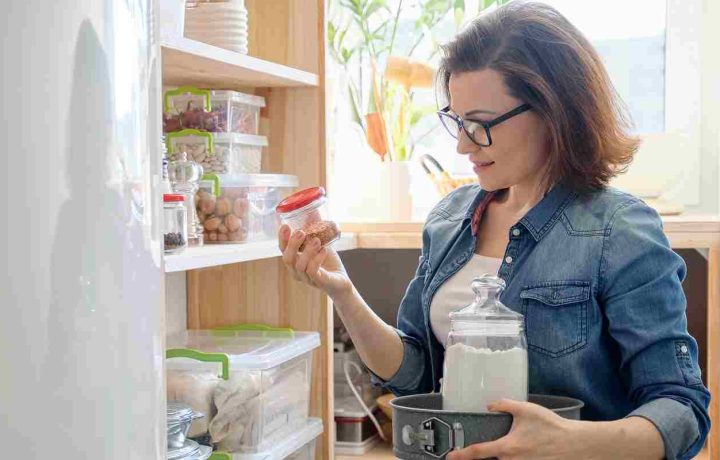In most homes, the pantry will be in one of three states of order: entirely unorganised, somewhat organised, or well organised. For many of those managed well pantries, it is pretty pantry labels that have contributed massively to that level of order being possible.
For anyone wondering what pantry labels are, they could not be any simpler as they are durable, easy to apply, and can be used to label just about anything you can think of in your pantry. Whether your pantry is tiny or so big you could almost classify it as an additional room in your home, pantry labels are an ideal resource to help you keep that pantry tidy and organised.
If you have never used a labelling system before to organise anything, including your pantry, you might be unsure how to use them. Fear not, as we are about to explain the best ways you can use pantry labels to help organise your pantry correctly and keep it organised so that whenever you need to retrieve something from it, you can find it almost instantly.
Decide How You Want Your Pantry To Be Organised: Whilst you are more than welcome to follow our suggestions, you will be using the pantry, so you are free to organise it in a way that suits you. Whether you do it by food type, how they are packaged, or even alphabetically, as we know some people prefer, the important point is that you use an organisation and pantry labelling system that you understand and can follow.
Keeping Types Of Foods And Ingredients Together: One of the most common pantry organisation methods is to keep similar food types and ingredients in the same area or shelf of the pantry. Examples of how this system works are below:
- Canned goods are then subdivided into specific food types, e.g. canned fruit, canned vegetables, canned soups, etc
- Snacks, e.g. crisps, cereal bars, vegetable sticks
- Boxes and packets of loose foods and ingredients, e.g. oatmeal, rice, pasta
- Bottled drinks such as mineral water
- Spreads and preserves, e.g. peanut butter, jams, marmalade
- Breakfast cereals
- Special foods for medical conditions, such as gluten-free food or food suitable for diabetics,
Acquire The Pantry Labels You Need: Once you have decided upon the system you will use to keep your pantry organised, you need to decide upon and purchase the pantry labels you want. This means choosing which sizes to buy, as there is bound to be a need for various sizes and types of labels, such as vintage, custom, or deluxe.
Affix Your Pantry Labels On The Appropriate Containers, Jars, Boxes And Shelves: Our advice for this stage is to remove all the items from your pantry to effectively empty it. This is easier because you do not have to keep moving items around as you label and store them in the pantry. Many of your pantry labels will be pre-printed, so you will only need to write out a few for those items that do not have a pre-printed label.
Place All The Items In Their Respective Locations In The Pantry: Based upon your chosen pantry organisation, as you label each item or set of items, place them back into the pantry in their specified location. When completed, you should now have a well-organised and fully labelled pantry.

